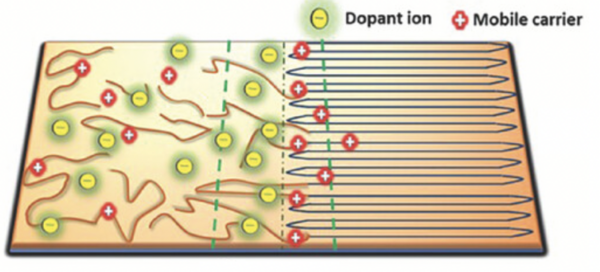Spontaneous Modulation Doping in Semi-Crystalline Conjugated Polymers Leads to High Conductivity at Low Doping Concentration
Aditya Dash, Shubhradip Guchait, Dorothea Scheunemann, Vishnu Vijayakumar, Nicolas Leclerc, Martin Brinkmann, and Martijn Kemerink
Adv. Mater. 2023, 2311303 [DOI: 10.1002/adma.202311303]
The possibility to control the charge carrier density through doping is one of the defining properties of semiconductors. For organic semiconductors, the doping process is known to come with several problems associated with the dopant compromising the charge carrier mobility by deteriorating the host morphology and/or introducing Coulomb traps. While for inorganic semiconductors these factors can be mitigated through (top-down) modulation doping, this concept has not been employed in organics. Here, this work shows that properly chosen host/dopant combinations can give rise to spontaneous, bottom-up modulation doping, in which the dopants preferentially sit in an amorphous phase, while the actual charge transport occurs predominantly in a crystalline phase with an unaltered microstructure, spatially separating dopants and mobile charges. Combining experiments and numerical simulations, this work shows that this leads to exceptionally high conductivities at relatively low dopant concentrations.
